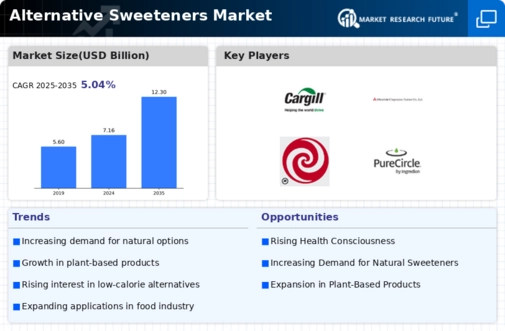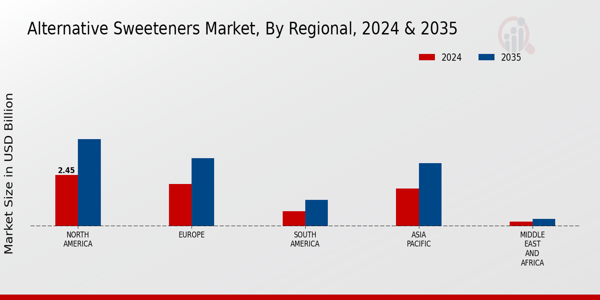Rising Demand for Low-Calorie Products
The Alternative Sweeteners Market is experiencing a notable increase in demand for low-calorie products. As consumers become more health-conscious, they actively seek alternatives to traditional sugars that contribute to weight gain and health issues. This shift is reflected in the growing popularity of products labeled as low-calorie or sugar-free. According to recent data, the market for low-calorie sweeteners is projected to grow at a compound annual growth rate of approximately 5.5% over the next five years. This trend indicates a significant opportunity for manufacturers to innovate and expand their product lines to cater to this evolving consumer preference.
Growing Popularity of Plant-Based Diets
The Alternative Sweeteners Market is witnessing a surge in interest surrounding plant-based diets. As more individuals adopt vegetarian and vegan lifestyles, the demand for natural and plant-derived sweeteners is on the rise. Products such as stevia and monk fruit are gaining traction due to their natural origins and perceived health benefits. Market analysis indicates that the plant-based sweetener segment is expected to grow significantly, with projections suggesting a market share increase of over 20% in the coming years. This trend not only reflects changing dietary preferences but also highlights the potential for innovation in the development of new plant-based sweetening solutions.
Regulatory Support for Healthier Food Options
The Alternative Sweeteners Market is benefiting from increasing regulatory support aimed at promoting healthier food options. Governments and health organizations are actively encouraging the reduction of sugar consumption through various initiatives and guidelines. This regulatory environment is fostering innovation within the sweetener industry, as companies seek to develop products that align with these health-focused policies. For instance, some regions have implemented sugar taxes, which further incentivizes consumers to opt for alternative sweeteners. This supportive regulatory landscape is likely to drive growth in the market, as manufacturers respond to both consumer demand and governmental directives.
Technological Advancements in Sweetener Production
The Alternative Sweeteners Market is being propelled by technological advancements in sweetener production. Innovations in extraction and processing techniques have led to the development of more efficient and cost-effective methods for producing alternative sweeteners. These advancements not only enhance the quality and taste of sweeteners but also improve their availability in the market. For example, new fermentation processes are being explored to create sweeteners with enhanced flavor profiles. As technology continues to evolve, it is expected that the market will see an influx of novel sweetening agents, further diversifying the options available to consumers and manufacturers alike.
Increased Awareness of Health Risks Associated with Sugar
The Alternative Sweeteners Market is significantly influenced by the rising awareness of health risks linked to excessive sugar consumption. Research has consistently shown that high sugar intake is associated with various health issues, including obesity, diabetes, and cardiovascular diseases. As a result, consumers are increasingly turning to alternative sweeteners as a means to reduce their sugar intake while still enjoying sweet flavors. This shift is not merely anecdotal; data suggests that the demand for sugar substitutes has surged, with a marked increase in product offerings across various food and beverage categories. This trend presents a compelling opportunity for companies to position their products as healthier options.


















Leave a Comment